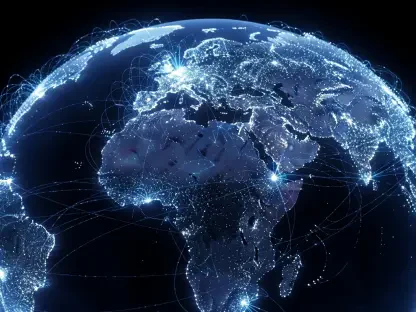Setting the Stage for BNPL’s Holiday Dominance
As the holiday season unfolds in 2025, a staggering statistic captures the shifting tides of consumer behavior: half of U.S. holiday shoppers are turning to Buy Now, Pay Later (BNPL) services to manage their festive spending. This payment method, allowing purchases to be split into manageable installments, has become a cornerstone for affordability amid economic pressures. The significance of this trend lies in its ability to reshape how consumers and merchants approach the busiest shopping period of the year, balancing the joy of giving with financial prudence. This market analysis delves into the forces propelling BNPL’s rise, examines current data and adoption patterns, and projects its trajectory in the holiday shopping landscape. The focus is on understanding why this payment option resonates so deeply, particularly with younger demographics, and how it influences both market dynamics and business strategies.
Deep Dive into BNPL Market Trends and Insights
Current Adoption Rates and Consumer Behavior
The BNPL market is experiencing unprecedented growth in 2025, with survey data indicating that 50% of U.S. holiday shoppers plan to utilize this payment method for year-end purchases. This surge reflects a broader demand for financial flexibility, as consumers prioritize spreading costs over time rather than facing immediate financial burdens. Notably, over half of respondents in a recent large-scale survey of 1,000 adults reported a higher likelihood of completing purchases when BNPL options are available, underscoring its role as a decisive factor in buying decisions. This trend is particularly pronounced during the holiday season, when budgets are often stretched thin by gift-giving and celebrations, making BNPL a vital tool for maintaining spending control.
Beyond raw numbers, the demographic breakdown reveals distinct patterns shaping the market. Younger generations, specifically Gen Z and Millennials, are at the forefront of adoption, with a quarter using BNPL regularly and a third having tried it at least once. This contrasts sharply with older demographics, who remain more tied to traditional payment methods like credit cards, highlighting a generational divide in financial preferences. The shift is further evidenced by historical data showing younger shoppers increasingly favoring BNPL over credit cards during high-spending periods, a behavior that has solidified in recent holiday seasons and continues to drive market expansion.
Merchant Impact and Economic Implications
Turning to the business side, BNPL’s integration into holiday shopping has proven transformative for merchants across various scales. Enterprises offering BNPL options report a remarkable 91% increase in average order value, while small businesses see a substantial 62% uplift, demonstrating the payment method’s capacity to boost sales during competitive festive periods. This financial tool not only encourages consumers to spend more by alleviating upfront cost concerns but also fosters customer loyalty when implemented seamlessly, creating a win-win scenario in a crowded retail environment.
However, the merchant perspective isn’t without challenges, as some harbor concerns over potential fees or customer defaults. Despite these hesitations, data suggests that the benefits often outweigh the risks, with many retailers experiencing enhanced transaction volumes and repeat business. The presence of major BNPL providers in the market has further facilitated adoption, offering tailored solutions that cater to diverse business needs. As holiday shopping intensifies, the strategic advantage of incorporating BNPL becomes increasingly clear, positioning it as a critical lever for revenue growth in 2025’s retail landscape.
Risks and Consumer Financial Health
While BNPL offers undeniable advantages, the market analysis must also account for inherent risks impacting consumer financial stability. Surveys reveal a sobering reality: nearly half of U.S. adults using BNPL have encountered financial difficulties, with significant portions overspending or missing other bill payments due to deferred payment obligations. This underscores a critical tension in the market—although BNPL enhances affordability, it can also lead to overextension for undisciplined users, particularly during the holiday spending frenzy when impulse purchases are common.
This risk factor introduces a nuanced layer to BNPL’s market penetration, as affordability must be balanced against the potential for debt accumulation. The holiday season, with its emphasis on generous gifting, amplifies these challenges, making consumer education and responsible usage paramount. Providers and retailers alike face the task of mitigating these risks through transparent terms and support tools, ensuring that BNPL remains a sustainable option rather than a financial pitfall for holiday shoppers in the current market.
Projections and Future Market Evolution
Looking ahead from 2025, BNPL is poised to further entrench itself in the holiday shopping ecosystem, with projections suggesting it could rival traditional credit card usage in transaction volume by 2027. Technological advancements, such as AI-driven personalization of payment plans, are expected to enhance user experiences, while potential regulatory frameworks may emerge to safeguard consumers from overborrowing. These developments point to a maturing market where innovation and oversight converge to address both opportunities and vulnerabilities.
Economic conditions, including persistent inflation and fluctuating disposable incomes, will likely continue fueling BNPL’s appeal as a budget-friendly alternative over the next few years. For merchants, deeper integration of BNPL services could become a standard competitive strategy, especially during peak shopping seasons. Meanwhile, consumer adoption is anticipated to broaden across demographics as awareness grows, potentially reshaping holiday spending habits on a fundamental level. The trajectory indicates a robust future for BNPL, provided the industry navigates the delicate balance between accessibility and financial responsibility.
Reflecting on BNPL’s Holiday Market Impact
Looking back on the 2025 holiday season analysis, it became evident that Buy Now, Pay Later had solidified its position as a pivotal force in consumer spending patterns, with half of U.S. shoppers leveraging it for affordability. The generational shift toward this payment method, alongside its profound impact on merchant sales, highlighted a transformative moment in retail dynamics. For businesses, the takeaway was clear: integrating BNPL proved essential for capturing higher order values and staying competitive. Consumers, on the other hand, needed to adopt disciplined budgeting practices to harness its benefits without succumbing to financial strain. Moving forward, stakeholders were encouraged to prioritize partnerships with reputable BNPL providers and invest in educational initiatives to promote mindful usage, ensuring that this payment innovation continued to empower rather than encumber holiday shoppers in subsequent seasons.









